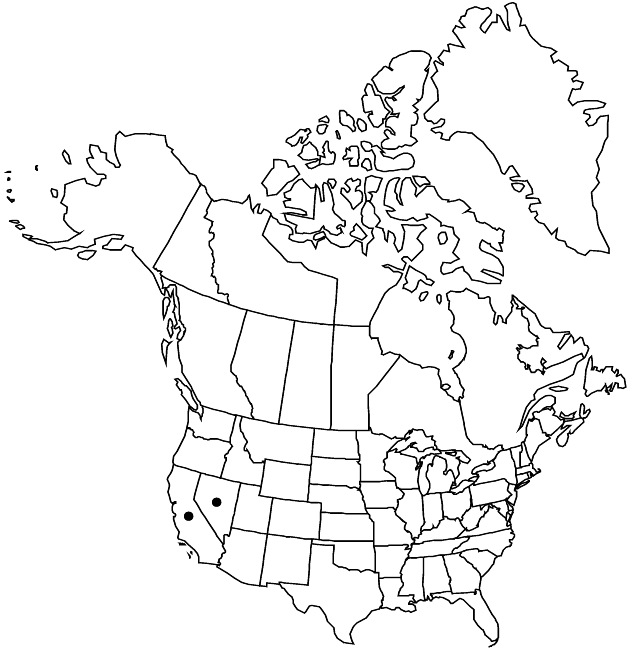Difference between revisions of "Erigeron uncialis"
Proc. Biol. Soc. Wash. 47: 173. 1934.
FNA>Volume Importer |
RevisionBot (talk | contribs) m (Bot: Adding category Revised Since Print) |
||
| (3 intermediate revisions by 2 users not shown) | |||
| Line 8: | Line 8: | ||
}} | }} | ||
|common_names=Lone fleabane | |common_names=Lone fleabane | ||
| + | |special_status={{Treatment/ID/Special_status | ||
| + | |code=F | ||
| + | |label=Illustrated | ||
| + | }}{{Treatment/ID/Special_status | ||
| + | |code=E | ||
| + | |label=Endemic | ||
| + | }}{{Treatment/ID/Special_status | ||
| + | |code=C | ||
| + | |label=Conservation concern | ||
| + | }} | ||
|basionyms= | |basionyms= | ||
|synonyms= | |synonyms= | ||
| Line 20: | Line 30: | ||
-->{{Treatment/Body | -->{{Treatment/Body | ||
| − | |distribution= | + | |distribution=Calif.;Nev. |
|discussion=<p>Varieties 2 (2 in the flora).</p> | |discussion=<p>Varieties 2 (2 in the flora).</p> | ||
|tables= | |tables= | ||
| Line 50: | Line 60: | ||
|basionyms= | |basionyms= | ||
|family=Asteraceae | |family=Asteraceae | ||
| − | |distribution= | + | |distribution=Calif.;Nev. |
|reference=None | |reference=None | ||
|publication title=Proc. Biol. Soc. Wash. | |publication title=Proc. Biol. Soc. Wash. | ||
|publication year=1934 | |publication year=1934 | ||
| − | |special status= | + | |special status=Illustrated;Endemic;Conservation concern |
| − | |source xml=https:// | + | |source xml=https://bitbucket.org/aafc-mbb/fna-data-curation/src/2e0870ddd59836b60bcf96646a41e87ea5a5943a/coarse_grained_fna_xml/V19-20-21/V20_659.xml |
|tribe=Asteraceae tribe Astereae | |tribe=Asteraceae tribe Astereae | ||
|genus=Erigeron | |genus=Erigeron | ||
| Line 61: | Line 71: | ||
}}<!-- | }}<!-- | ||
| − | -->[[Category:Treatment]][[Category:Erigeron]] | + | --> |
| + | |||
| + | [[Category:Treatment]] | ||
| + | [[Category:Erigeron]] | ||
| + | [[Category:Revised Since Print]] | ||
Latest revision as of 18:32, 6 November 2020
Perennials, 0.8–7 cm (cespitose); taprooted, caudex branches usually lignescent, sometimes relatively elongate. Stems erect (greenish), sparsely loosely strigose to hirsuto-villous, usually densely villous distally, eglandular. Leaves all or mostly basal (persistent; petiole base margins spreading-ascending-ciliate); (greenish) spatulate, blades elliptic-obovate to suborbiculate, 10–40 × (1.5–)2–6 mm (bases abruptly contracted to petioles), margins entire (apices rounded to obtuse), faces strigose to hirsuto-villous, less densely so abaxially, eglandular. Heads 1. Involucres 3–5 × 7–10 mm. Phyllaries in 2–3 series (margins purplish), hirsuto-villous, sometimes sparsely minutely glandular (midregions and near apices). Ray florets 22–30; corollas white to pink, often with broad pink abaxial midstripe, 6–7 mm, laminae not coiling or reflexing, spreading. Disc corollas 2–2.4 mm. Cypselae 1.3–1.8 mm, 2-nerved, faces sparsely strigose; pappi: outer of setae, inner of 14–22 bristles.
Distribution

Calif., Nev.
Discussion
Varieties 2 (2 in the flora).
Selected References
None.
Key
| 1 | Stems 0.8–2.5 cm, hirsuto-villous; leaves 10–20 mm, hirsuto-villous to loosely strigose | Erigeron uncialis var. uncialis |
| 1 | Stems 3–7 cm, loosely villoso-strigose; leaves 20–40 mm, sparsely closely strigose | Erigeron uncialis var. conjugans |